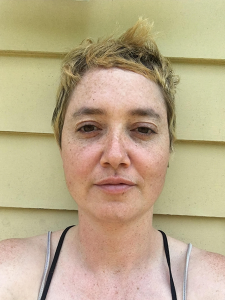This post is the first of a few to explore the theme of reparations. The term has come to refer to a broad movement advocating for payments and structural repair to those harmed by slavery in the U.S. and to Black and Indigenous people. The Oxford dictionary defines reparations as “the making of amends for a wrong one has done, by paying money or otherwise helping those who have been wronged.” In this case, the payments and structural repair are in recognition of the land, labor and human bodies stolen and expropriated from native peoples and enslaved Africans and descendants of Africans.
 In a virtual Town Hall panel, “Reexamining the History of Johns Hopkins at Johns Hopkins held by the university in December of 2020, Ron Daniels, President of the university, said “For a university that is supposed to be skeptical, supposed to be discerning, supposed to be dedicated to truth seeking, we embraced something very readily that now it turns out does not appear to be true. And so what does that say about us?” (21:25) This town hall disclosed the recent surfacing of evidence that Johns Hopkins, a Baltimore philanthropist, alleged abolitionist, beloved progressive benefactor and founder of Johns Hopkins University, also owned enslaved Africans in the 1800s.
In a virtual Town Hall panel, “Reexamining the History of Johns Hopkins at Johns Hopkins held by the university in December of 2020, Ron Daniels, President of the university, said “For a university that is supposed to be skeptical, supposed to be discerning, supposed to be dedicated to truth seeking, we embraced something very readily that now it turns out does not appear to be true. And so what does that say about us?” (21:25) This town hall disclosed the recent surfacing of evidence that Johns Hopkins, a Baltimore philanthropist, alleged abolitionist, beloved progressive benefactor and founder of Johns Hopkins University, also owned enslaved Africans in the 1800s.
This fact came to light as the school used their own research apparatus within the libraries to examine the school’s origin story. In this open letter written by President Daniels, the President shares that the narrative on the founder Hopkins was based on a short book written by Hopkins’ niece Helen Thom in 1929. “The current research done by [Professor] Martha Jones and [researcher] Allison Seyler finds no evidence to substantiate Thom’s description of Johns Hopkins as an abolitionist.”
President Daniel’s “What does that say about us?” is an offering that says in essence, we don’t know who we are. It is inspiring to see the leaders of institutions simply pause, feel, and commit to learning more. The repair of harm is central to the work of transformative justice. How can we repair harm if we don’t know what harm happened? What harms, concealed by denial, happened right under our noses and persist to this day?
Smith is engaging in this work as part of our Racial Justice Plan which states “because Smith was not originally designed for the diverse students, staff and faculty that we have now, we are called to reflect on our past and present to build a more just and inclusive future.”
What does it take for us to admit the harms we may have caused, as individuals and in community, and move toward repair? This is one of the greatest moral and ethical questions of our time, and we are grappling with it as an institution, and are engaging in it in the CRSL through an exploration and focus on transformative justice. This case of John Hopkins points to a few of the key elements for this type of reckoning.
- There are those who are willing to speak and investigate the truth of what happened. In this case, that was accomplished through the internal research apparatus of the institution.
- A willingness to shift our narrative: We may not be who we thought we were, and we need to change our actions in order to align more closely with who we want to be.
- Those harmed and impacted are essential to guiding the repair process.
This revelation of the truth and dismantling of Johns Hopkins’ origin story arises during a time when many institutions of higher education are reckoning with their ties, direct and indirect, to the slave trade. You can visit the Princeton & Slavery Project, which explains that the “school’s first nine presidents owned slaves, a slave sale took place on campus in 1776, and enslaved people lived at the President’s House until at least 1822.” Georgetown, Brown, Harvard, and the University of North Carolina at Chapel Hill are just a few other institutions that are all actively engaged in reckoning with their institutions’ and benefactors’ participation in slavery and the transatlantic slave trade. In many cases, this process is leading to direct reparations efforts to the descendants of those harmed.
The Center for Religious and Spiritual Life is concerned with the religious and spiritual well-being of our students, and our community as a whole. Our values include standing for the dignity and wholeness of all beings without exception, and this necessitates that we embrace a paradigm of transformative justice; an approach that seeks to shift the very power relations from which the harm arose in the first place. Join us this year as we explore these themes in Generating Justice and Joy and our other programs and conversations.
Anna Ostow, CRSL Mindfulness Instructor, wrote this article and is pictured above.
